Dirty Money: The Role of Corruption in Enabling Wildlife Crime
July 2023

© All photos are property of the Wildlife Justice Commission, unless otherwise indicated. Not for reproduction.

July 2023

© All photos are property of the Wildlife Justice Commission, unless otherwise indicated. Not for reproduction.
Commission on Crime Prevention and Criminal Justice
Convention on International Trade in Endangered Species of Wild Fauna and Flora
Global Initiative against Transnational Organized Crime
International Anti-Corruption Conference
Illegal, unreported and unregulated (fishing)
Kuala Lumpur International Airport
Organised criminal group
South African National Parks
South African Police Service
United Nations Convention against Corruption
United Nations Office on Drugs and Crime
United Nations Convention against Transnational Organized Crime
In the fight against corruption, the Wildlife Justice Commission works with a diverse range of partners to share intelligence, support investigations, and contribute to research and policy development, including governments, international organisations, non-governmental organisations, and entities in the private sector. We thank all our partners for their ongoing collaboration and support, and we acknowledge the vital and long-standing efforts of the many organisations and individuals worldwide who are working to break down silos and address this complex issue across all fronts.
The generous flexible funding of the following donors has made this report possible: Arcadia, the Dutch Postcode Lottery, the UK People’s Postcode Lottery, the Oak Foundation, Fred Foundation, Timeless Foundation, Stichting Nieuwe Waarde, WWF Netherlands, the Whitehead Foundation as well as individual and anonymous donors.

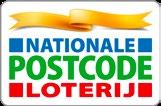




@WildlifeJusticeCommission
Wildlife Justice Commission
Wildlife Justice Commission
@WJCommission
www.wildlifejustice.org
Since the creation of the Wildlife Justice Commission in 2015, a constant we have observed in our intelligence-led investigations into wildlife trafficking across the globe is the role of corruption in enabling this form of organised crime. Corruption is the air that wildlife crime breathes; it is one of the key enablers of widespread and large-scale wildlife trafficking and one of the biggest obstacles to effective law enforcement. It impacts the work of park rangers, authorities issuing permits, customs officials, and even reaches courtrooms where justice should be served. It undermines the criminal justice system and creates a significant advantage for criminal networks, as corrupted officials protect traffickers and hinder investigative efforts.
In January 2023, a report published by ENACT asserted that the most pressing challenge in South Africa’s Kruger National Park is no longer preventing rhino poaching, but eradicating internal corruption. According to the report’s author Julian Rademeyer, the challenge is immense and to be effective, the response should involve “a long-term strategy to counter and disrupt key criminal networks”.1
At the Wildlife Justice Commission, we couldn’t agree more. We have long been advocating for
strong and coordinated measures to address the role of corruption in enabling wildlife crime and we are committed to promoting solutions to tackle it. The United Nations Convention against Corruption (UNCAC) is the only legally binding international instrument against corruption and its far-reaching approach combined with the mandatory character of many of its provisions make it a unique tool in tackling all forms of corruption. We co-founded and chair the UNCAC Coalition’s Environmental Crime and Corruption Working Group, which comprises over 100 civil society organisations across the globe, advocating for strong and coordinated measures to address corruption related to crimes that impact the environment.
In December 2022, I was present at the 20th International Anti-Corruption Conference (IACC) in Washington DC where we organised a workshop on behalf of the Working Group and discussed the role of corruption as a key enabler of environmental crime. Along with my fellow panellists, we concluded that a significant gap still exists between legal frameworks and their enforcement in practice. The legal framework necessary to address this issue already exists, however weak implementation and enforcement continue to fuel environmental crime and foster further corruption.
Olivia SwaakGoldman Executive Director, Wildlife Justice CommissionThis is an opportune moment for the Wildlife Justice Commission to share consolidated findings stemming from our own investigations and from open-source research on how corruption enables wildlife crime, to move the discussions forward ahead of the convening of several important conferences dedicated to addressing the role of corruption in environmental crime in 2023 and beyond. All efforts to combat wildlife trafficking will fail unless corruption is tackled first. Now is the time to act to address wildlife crime and the corruption that enables it.

Corruption is an insidious scourge that can be found in all countries regardless of their size, wealth, and level of development. It is also one of the biggest challenges facing law enforcement agencies combating wildlife crime. Corruption greases the wheels of the illegal wildlife trade, facilitating the movement of wildlife shipments along all stages of the supply chain from source to market, and serving criminal networks by obstructing the criminal justice response, allowing them to operate with impunity.
Harm from corruption can taint every aspect of society, but specifically in relation to wildlife crime, impacts can be seen in the erosion of trust in institutions responsible for environmental protection, the resulting environmental damage, and in the violence and threats to human life.
The intrinsic link between corruption and wildlife crime is recognised in a multitude of agreements in the international policy framework, but the lack of data and prosecuted cases compared to the volumes of intelligence collected during investigations suggests there is inadequate implementation of these commitments in practice.
This report presents a collection of examples stemming from Wildlife Justice Commission investigations and open-source research, to illustrate how corrupt acts occur in the wildlife crime context and to depict the crucial enabling function of corruption in real terms. Corrupt acts can include – among others - bribery of rangers to provide information to poachers, the involvement of government officials in stockpile theft and embezzlement, bribery of customs officials to facilitate the safe passage of shipments, the use of fraudulent export and import documents, and bribery to secure bail and release from custody.
The report also provides a detailed rhino horn trafficking case study that highlights the close links between crime enabling factors and areas of corruption risk, many of which can be addressed together with the use of standard law enforcement methodologies and tools such as intelligence analysis, specialised investigation techniques, financial investigations, and international cooperation.
Price data and intelligence collected by the Wildlife Justice Commission suggest that corruptionrelated costs are treated as regular business costs within wildlife trafficking operations and make up a considerable portion of the total costs of an illicit wildlife shipment. These costs can be highly variable between different locations and are influenced by factors such as the perceived level of risk in the activity and the rank or position of the officer requiring payment. Intelligence indicates that corruption costs that are more structured and organised are often paid by bank transfer, such as fees to secure customs clearance and fees for fraudulent permits. Apart from the use of third-party bank accounts to make and receive payments, wildlife traffickers appear to make very little effort to hide or disguise their financial activity.
Wildlife crime and corruption must be addressed in a more connected way as recommended in the policy framework, rather than being treated as two separate issues in law enforcement responses. Levelling the playing field will require an innovative and cohesive approach on the part of all stakeholders to identify the high-risk areas for corruption, develop the means to prevent, investigate, and prosecute corrupt activities, and establish a robust framework to tackle corruption along the wildlife supply chain. These actions must be prioritised to eradicate corruption harms and reduce the opportunities for criminal networks to engage in wildlife crime.
This report focuses on the role of corruption as one of the most important enabling factors behind wildlife crime, in an attempt to bring more clarity to what is often a murky and nebulous subject. It presents a collection of case examples to illustrate the mechanisms and modalities of corruption in real terms - how it facilitates the movement of wildlife shipments along all stages of the supply chain from source to market, and how it can serve criminality by obstructing the criminal justice response, allowing criminal networks to operate with impunity. This report also highlights the harm caused by corruption and urges strong action to counter it.
By zeroing in on the role of corruption, this report aims to assist law enforcement and policy makers to:
Understand how corrupt acts can present in relation to wildlife crime.
Identify points of potential corruption risk in the wildlife trade supply chain.

Consider practical measures that could be taken to mitigate and address these risks.
Wildlife crime: While there is no official definition of wildlife crime, this report uses the term broadly in reference to all fauna and flora (and their parts and products) subject to illegal trade in contravention of national law or international law,2 including timber and non-timber forest products, and marine species.
Corruption: The UNCAC provides a universal, legally binding set of standards, measures, and rules that all countries can apply to fight corruption. The treaty recognises the continuously evolving nature of this phenomenon, and rather than defining what constitutes “corruption”, it provides an agreed set of corrupt acts that should be criminalised in national legislation. These corrupt acts include bribery (actively giving and passively receiving) in the public or private sector, embezzlement, abuse of office/position, and trading in influence. Related acts also include illicit enrichment, concealment, and money laundering.3
2 Namely the Convention on International Trade in Endangered Species of Wild Fauna and Flora (CITES), as the legally binding instrument for the regulation of international trade in more than 40,000 species of animals and plants. https://cites.org/eng
3 U ni ted Nations Convention against Corruption treaty (2004), accessed at: https://www.unodc.org/documents/treaties/UNCAC/Publications/Convention/08-50026_E.pdf
One example was selected to illustrate each category of corrupt act that can occur along the wildlife supply chain and in the criminal justice system, to provide an overview of the crucial enabling function of corruption. Example selection is therefore not intended to be comprehensive, nor is it intended to single out specific countries or to be a statement on the level of corruption in the country. As a universal phenomenon,4 many more examples of corruption can be found in volving a much wider range of species and locations than have been presented in this report. The exam ples were sourced from findings documented dur ing Wildlife Justice Commission investigations as well as from open-source research of reports published by governments, international organisations, non-gov ernmental organisations, and media articles.
The Wildlife Justice Commission’s investigation ap proach is modelled on recognised and proven law en forcement methodologies and its team of analysts and investigators are former law enforcement profes sionals. It uses a combination of undercover opera tives, covert surveillance, and networks of trusted in formants to collect intelligence and evidence across the supply chain, from source to destination. All at tempts are made to verify and corroborate intelli gence to ensure it is as robust and accurate as possi ble, and it is documented to an evidentiary standard. The Wildlife Justice Commission works in collabora tion with vetted and trusted law enforcement units in several key countries along the wildlife supply chain to share intelligence and conduct joint operations.
Since 2015, the Wildlife Justice Commission’s investigations have found extensive evidence of the key role that corruption plays in enabling wildlife crime, occurring across the global supply chain and involving public and private sector actors. Many of the examples included in this report were drawn from previous Wildlife Justice Commission publications, which can be referred to for further detailed information and analysis:
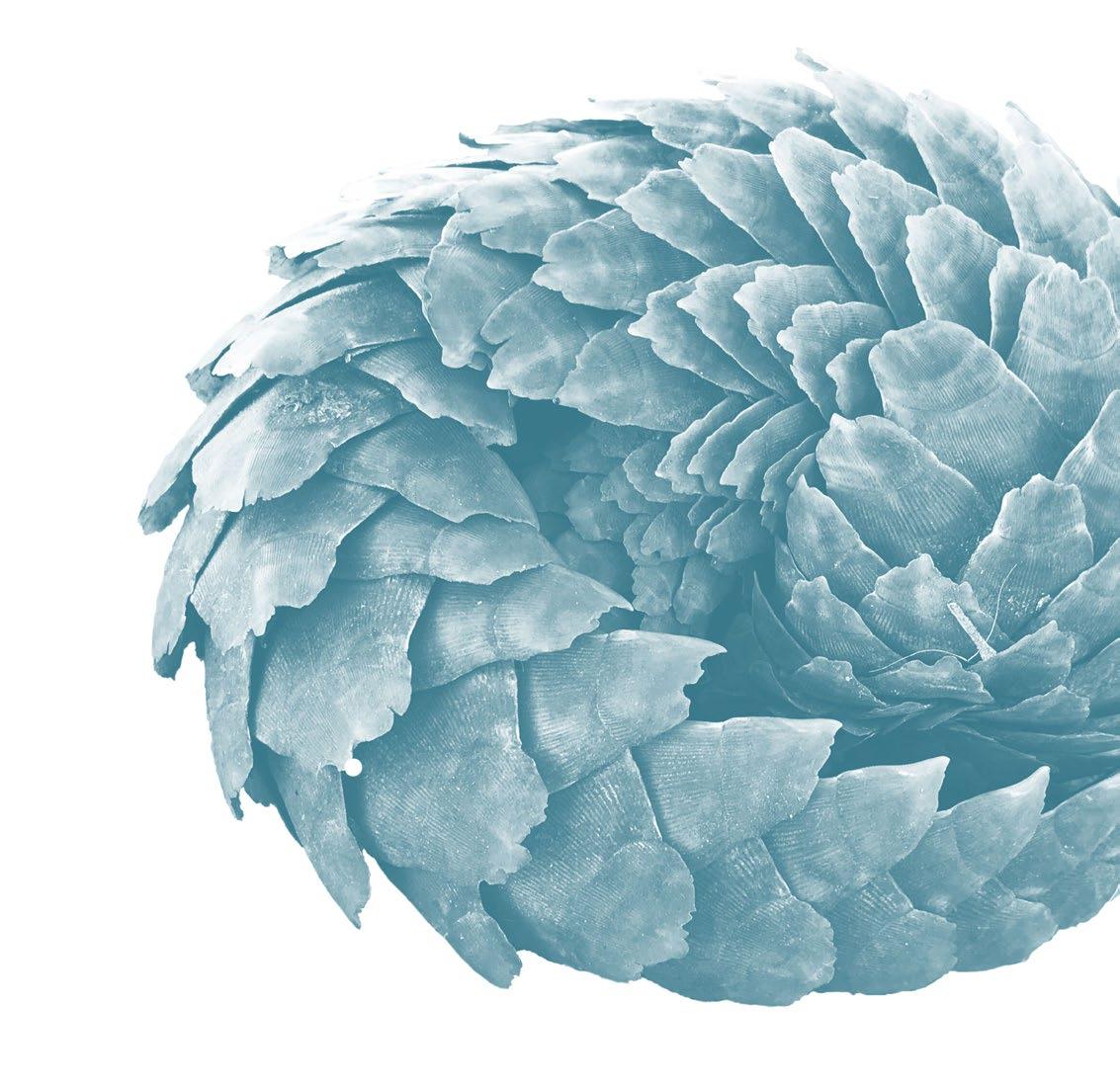
2012-2021
(referred to as the ‘Tiger Report’), published in November 2022, based on six years of findings from the Wildlife Justice Commission’s investigations into tiger-related crime in the Greater Mekong Subregion.

Rhino horn trafficking as a form of transnational organised crime: 2012-2021
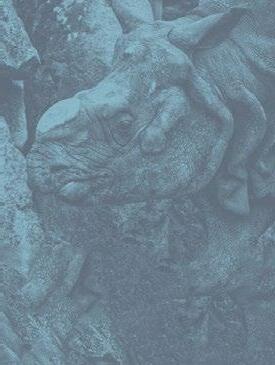
(referred to as the ‘Rhino Report’), published in October 2022, presents a comprehensive global threat assessment of the illegal rhino trade over the 10 years from 2012 to 2021, based on Wildlife Justice Commission investigations and open-source research.
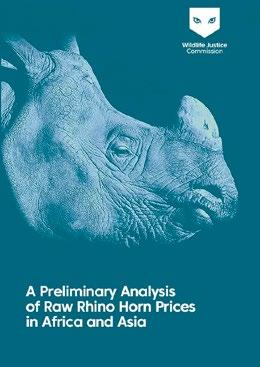
(referred to as the ‘Crime Convergence Report’), published in May 2021, presents case studies illustrating the convergence of wildlife crime with other forms of organised crime, based on Wildlife Justice Commission investigations as well as open-source information.
Operation Dragon: Revealing new evidence of the scale of corruption and trafficking in the turtle and tortoise trade
(referred to as the ‘Operation Dragon Report’), published in December 2018, details the Wildlife Justice Commission’s two-year investigation (2016-2018) into turtle and tortoise trafficking and corruption in South and Southeast Asia.

down the Dragon: An analysis of China’s largest ivory smuggling case

(referred to as the ‘Chen OCG Case Study’), published in February 2022, is an in-depth case study of the inner workings of the Chen organised crime group, who were behind China’s largest ivory smuggling case.
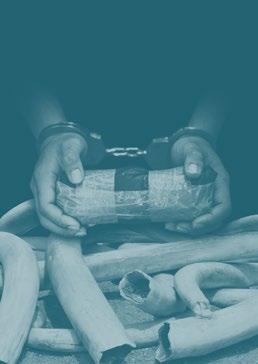
(referred to as the ‘Black Business Report’), published in September 2017, describes the criminal dynamics of illegal rhino horn trade in Nhi Khe, Vietnam, based on Wildlife Justice Commission investigations from 2015-2017.
There is a well-recognised, symbiotic relationship between corruption and organised crime in any society: corruption allows organised crime to function and flourish, while organised crime provides the financial and social incentives that can entice individuals to become engaged in corrupt activity.5 This nexus can occur at local, national, and transnational levels, and can involve government officials and the private sector.
As a form of organised crime, wildlife crime is no exception. The illegal wildlife trade is a highly lucrative illicit business, with deep and pervasive links to corruption that enable criminal networks to commit, conceal, and avoid conviction for their crimes.6
Wildlife is a commodity that is particularly vulnerable to corruption because its legality depends on the way it is sourced and traded; meaning that in addition to being smuggled by stealth, shipments can also be moved through legitimate commercial channels with the use of fraudulent documents.7
Corruption facilitates the poaching, transportation, processing, and sale of illegal wildlife products at every step of the global supply chain, from source location to destination market. It frequently occurs in the process of applying for licences, permits, or other documentation, or at border control or other inspection points where officials may be bribed to facilitate the movement of contraband across
5 Te nnant, I. (2021). All Roads Lead to Rome: Towards a coordinated multilateral response to organized crime and corruption . Global Initiative against Transnational Organized Crime, p.1.
6 UNODC (2020). Scaling Back Corruption: A guide on addressing corruption for wildlife management authorities , p.1.
7 M o rantz, M. (2017). Corruption and Wildlife Crime , submitted to the 5 th OECD Task Force Meeting on Countering Illicit Trade.
borders or to “turn a blind eye” to illegal activities. Corrupt support can also undermine the criminal justice system, such as by providing advance warnings about law enforcement activity, payments for protecting or not prosecuting traffickers, selling back seized contraband, or bribes to secure bail or release offenders from custody.
Corruption can be ad hoc, involving smaller payments and lower-level officials, or systemic, involving politicians and senior officials in key government ministries and the corporate sector. It is most likely to exist where there is little or no oversight on institutions with key decision-making powers, nontransparent processes related to resource allocation and accountability, weak civil society, and widespread poverty. 8
In some cases, criminal networks apply sophisticated approaches to entrap officials or use threats or violence to coerce them into supporting their operations. An in-depth case study published by the ENACT partnership describes the devastating impact of corrosive corruption and violent organised crime in the context of the ‘war on poaching’ in South Africa’s Kruger National Park: “Most of Kruger’s staff live in villages and towns around the park. They are particularly vulnerable to the poaching syndicates
and criminal gangs that live alongside them. There are no safe spaces.”9 “The western boundary…is a landscape of fear. Illicit markets abound and violence and murder are all too common.” 10 High-profile murders in the Kruger landscape have included South African Police Service investigator Lieutenant Colonel Leroy Bruwer in 2020, 11 Timbavati Game Reserve ranger Anton Mzimba in 2022, 12 and two alleged rhino poaching kingpins Petros Mabuza in 2021 13 and Clyde Mnisi in 2023. 14
Despite the intrinsic links between corruption and wildlife crime, there is little data to determine the full scale and extent of the problem. A 2021 UNODC study found few adjudicated cases, national data or statistics on the connection between these issues. 15 The study identified 15 adjudicated wildlife crime cases relating to corruption or money laundering, of which five cases involved abuse of office by public servants to facilitate illegal wildlife trade, while other cases involved public officials allowing hunters to target threatened species, corruption supporting cross-border transportation of wildlife shipments, and in one case a corrupt public official who used insider information to help two citizens to establish a shell company and win a glass eel procurement contract. 16
8 Wyatt, T. (2017). How corruption enables wildlife trafficking , in Williams, A. & Le Billon, P. (eds), Corruption, Natural Resources and Development, Chapter 12, pp. 154-162.
9 R a demeyer, J. (2023). Landscape of Fear: Crime, corruption and murder in greater Kruger . Research paper, Issue 36, ENACT, p.3.
10 I bid, p.4.
11 https://www.sowetanlive.co.za/news/south-africa/2020-03-18-rhino-poaching-top-investigator-shot-dead-on-his-way-to-work/
12 h ttps://www.dailymaverick.co.za/article/2022-07-29-the-violent-death-of-timbavati-ranger-anton-mzimba-mourned-by-conservationists-worldwide/
13 h ttps://www.sowetanlive.co.za/news/south-africa/2021-06-17-rhino-poaching-kingpin-gunned-down-in-hazyview/
14 https://www.dailymaverick.co.za/article/2023-03-27-alleged-rhino-poaching-kingpin-gunned-down-near-kruger-park/
15 U NO DC (2021). Preventing and combating corruption as it relates to crimes that have an impact on the environment: An overview , p.8.
16 I bi d, p.20.
The specific link between corruption and wildlife crime is widely recognised in the international policy framework, with various commitments to address this issue adopted over the past 10 years (Table 1).
However, the lack of data and prosecuted cases compared to anecdotal evidence and intelligence collected during investigations of the widespread presence of corruption on the ground, suggests that there is inadequate implementation of these commitments in practice. It could also reflect the tendency for wildlife crime and corruption to be addressed as two separate issues in law enforcement
responses, rather than applying strategies and tools in a coherent and connected way as recommended in the policy framework.
Empirical analysis of jurimetric data from organised crime case files sampled in 119 countries over more than 30 years also suggests there are major gaps in the application of UNCAC provisions and anti-corruption laws in practice. The research identified the presence of public sector or private sector corruption at some level in 72% of the cases sampled, and while 62% of countries in the sample have national legislation that is compliant with UNCAC provisions, only 19% were found to be applying those laws in practice. The most significant gaps identified were a lack of institutional coordination between investigators, prosecutors, and judges, and a lack of international cooperation between countries.17

Prof.
can be accessed here: https://iaccseries.org/wp-content/uploads/2023/03/Day-8-IACC2022_Session-Report_Environmental-Crime-corruption-and-climate-crisis.pdf The full ev ent recording can be accessed here: https://www.youtube.com/watch?v=l5zCMegGBys
Since 2015, the UNGA has adopted five resolutions on tackling wildlife trafficking, all of which highlight the need to counter corruption, and other resolutions more broadly on crimes that affect the environment. The most recent resolution on wildlife trafficking, A/RES/75/311 adopted in 2021, encourages Member States to make the greatest possible use of legal instruments available at the national level to protect threatened wildlife species and tackle wildlife trafficking, including through legislation related to money-laundering, corruption, fraud, racketeering and financial crime.
Resolution 2013/40 on crime prevention and criminal justice responses to wildlife trafficking was adopted in 2013. It requests Member States to fully utilise UNCAC to prevent and combat wildlife trafficking and calls for the full and effective implementation of this treaty.
The CCPCJ has adopted several relevant resolutions, including Resolution 28/3 adopted in 2019. This resolution encourages Member States to adopt effective measures to prevent and counter the serious problem of crimes that have an impact on the environment, such as wildlife trafficking, by strengthening legislation, investigations, international cooperation, capacity building, criminal justice responses and law enforcement efforts targeting transnational organised crime, corruption and money laundering linked to such crimes. The issue of combating corruption was also a key topic at the CCPCJ expert discussions in 2022 on crimes that affect the environment.
Resolution 8/12 on preventing and combating corruption as it relates to environmental crimes was adopted in 2019. It urges States parties to effectively prevent, investigate and prosecute corruption offences where they may be linked to environmental crimes, as well as to freeze, seize, confiscate, and return the proceeds of crime.
Resolution 10/6 on preventing and combating crimes that affect the environment and falling within the scope of the UNTOC, was adopted in 2020. It calls upon States parties to assess and mitigate corruption risks, to strengthen anti-corruption measures consistent with UNCAC provisions, to prevent conflicts of interest, promote ethical practices, transparency, and ensure integrity throughout the crime prevention and criminal justice system. Further to this, Resolution 11/3 adopted in 2022 recommends that States parties should prevent and combat corruption as an enabler of crimes that affect the environment and make the best use of UNTOC and UNCAC to strengthen anti-corruption measures. CITES
Resolution Conf. 17.6 on prohibiting, preventing and countering corruption was adopted in 2016. It encourages all Parties to adopt measures to prohibit, prevent, detect, and counter instances of corruption related to CITES and to ensure such offences are punishable with appropriate penalties. It also encourages inter-agency coordination between CITES Management Authorities, criminal justice authorities, and relevant civil society organisations to design and implement integrity policies and other corruption deterrence initiatives.
This chapter provides a selection of detected cases and intelligence findings to illustrate how corrupt acts can occur in the global wildlife trafficking supply chain and highlight vulnerable points that have been exploited by organised crime groups.
patrols and the location of rhinos. The Wildlife Justice Commission has collected intelligence on the leader of a rhino poaching network who indicates he is working with rangers in Kruger National Park who forward him information on where rhinos are roaming, and he then arranges his poaching teams to deploy to those locations. There are reported estimates that up to 40% of Kruger National Park’s law enforcement staff could be aiding poaching networks or be involved in corruption in some way; and some estimate that figure could even be as high as 70%. 19
Corrupt officials can be the very staff employed to protect wildlife at parks and reserves. Game scouts and rangers in protected areas can be bribed and coerced into providing information to poachers, or to turn a blind eye to, or even play an active role in, poaching.
South African National Parks (SANParks) has acknowledged the severe threat that internal corruption and collusion presents to rhino populations, 18 and various arrests have been made of park rangers found to be working with poaching networks and providing inside information on anti-poaching
One of the areas of highest corruption risk in the supply chain is the process of applying for licences, permits, or other official documents to obtain wildlife, fish, or timber products. Corruption risks in the permit process could include issues such as officers accepting bribes to issue a licence or permit to an unqualified person or entity, officers overcharging for permits and keeping the difference, bribery to misclassify species types or origins for import/export permits to facilitate trade or avoid traceability, among others.20 Such risks are more likely to exist if there is little or no oversight or accountability in the permit process.
Peru’s largest illegal timber case demonstrated deep and systemic connections between illegal timber and fraud, with official documents containing false information used to launder timber that was allegedly illegally harvested. In early 2016, investigators found that 96% of a shipment of 1,312m3 timber was “not of legal origin”, taken from Peruvian indigenous communities, farming families and
18 S ANParks (2020), South African National Parks Annual Report 2019/20, p.69. 19 R adem eyer, J. (2023). Landscape of Fear: Crime, corruption and murder in greater Kruger. Research paper, Issue 36, ENACT, p.3.
20 U NO DC (2020). Scaling Back Corruption: A guide on addressing corruption for wildlife management authorities , p.18.
government lands. The investigation exposed several methods by which illegal timber is laundered into the legal supply. One of the methods involved purchasing timber from areas where logging is not permitted, using false certification documents identifying it as being from a legal concession. Harvesting plans could be drawn up by corrupt forestry consultants falsifying the tree locations to make it appear as though they were within legal concession boundaries. Another method exploited the designated “local forest” areas, which allow small quantities of timber to be taken by local communities for self-subsistence and local infrastructure purposes. However, investigators discovered that most of the logging occurring in many of the local forests was in fact large-scale and for commercial purposes.
(Refer to the Crime Convergence report).
Government officials can abuse their positions of authority to facilitate criminal networks’ access to a supply of wildlife or wildlife products.
In November 2022, two officials of the Cambodian Ministry of Agriculture, Forestry and Fisheries, Omaliss Keo and Masphal Kry, were among eight people charged by the United States Department of Justice for their role in facilitating the export of wildcaught long-tailed macaques (Macaca fascicularis) from Cambodia to the United States for use in medical and pharmaceutical research. 21 Long-tailed macaques are protected under CITES Appendix II, requiring a valid CITES export permit for international trade. The indictment 22 alleges that six employees of a Hong Kong-based company and its subsidiary based in Cambodia, engaged with the Cambodian officials to secure the illegal capture of wild macaques from national parks and protected areas. The macaques were laundered through the company’s breeding facilities in Pursat, Cambodia for export to the United States and elsewhere, using CITES permits falsely labelling the animals as captive bred. The indictment alleges the Cambodian officials allowed a collection quota of up to 3,000 “unofficial” macaques since at least December 2017, accepted bribes amounting to tens of thousands of dollars, a sizeable political donation to the Cambodian People’s Party, and supplied falsified CITES permits to accompany the shipments. One of the officials, Masphal Kry, was arrested in the United States while en route to attend the CITES Conference of the Parties meeting in Panama, while a warrant has been
21 h ttps://www.justice.gov/usao-sdfl/pr/cambodian-officials-and-six-co-conspirators-indicted-taking-part-primate-smuggling-0
link: https://www.peta.org/wp-content/uploads/2022/11/US-v-KEO-et-al.pdf
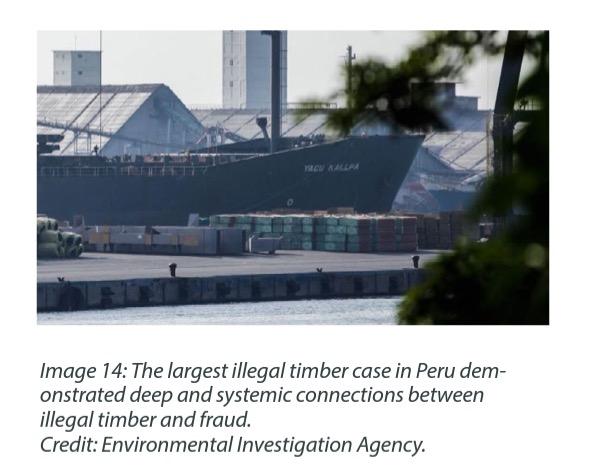
signed for the arrest of Omaliss Keo. 23 Although corruption was an essential enabling factor in this case, the charges laid thus far relate only to the conspiracy and smuggling offences.
Apart from poaching, a major source of wildlife and timber can come from the theft or leakage of products from legal stockpiles, and the related corrupt act of embezzlement, with public officials stealing from government stockpiles and selling the products into the illegal trade.
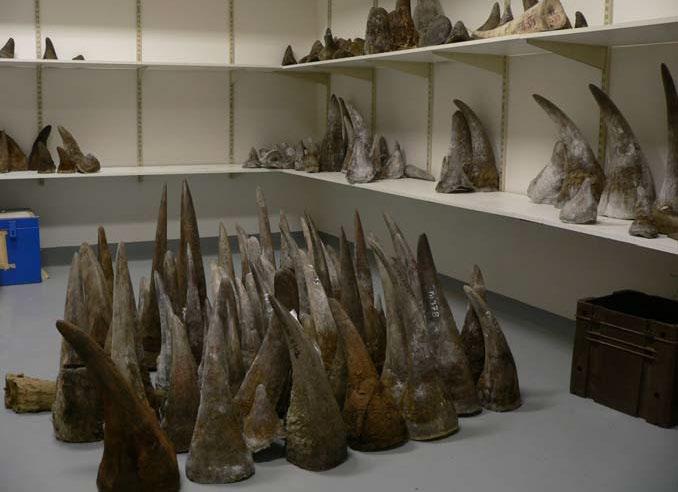
In Vietnam, a customs officer who was responsible for supervising the arrival, storage, and withdrawal of confiscated goods at a customs warehouse, used
23 h ttp s://news.mongabay.com/2022/11/alleged-macaque-smuggling-ring-exposed-as-u-s-indicts-cambodian-officials/; htt ps ://www.thethirdpole.net/en/nature/globe-head-cambodian-official-arrested-on-wildlife-trafficking-charges/
[My boss]
he’s a master in Africa. He do a lot, a lot of investment in Africa…He got a lot of connection with high officer, high ranking officials here
— BROKER, OCTOBER 2020Image 2: Rhino horn stockpile. Source: S Milledge/TRAFFIC East/Southern Africa, https://www.traffic.org/site/assets/ files/4060/rhino_horn_stockpile_management.pdf
his position to steal 6.1 kg of rhino horns and 240 kg of ivory over several months. 24 He worked with a civilian associate to find buyers for the products and to purchase fake replacements. The two men were arrested in September 2017, convicted in August 2018 on embezzlement charges, and sentenced to 16 years imprisonment. 25 Similar cases of theft from government stockpiles have also been reported in several southern African countries, 26 among others. (Refer to the Rhino Report).
Image 3: A Vietnamese customs officer (on the right) convicted for embezzlement relating to theft of rhino horn and ivory from seized stockpiles, along with two other defendants. Source: Dan Viet Media. https://danviet.vn/cuu-canbo-hai-quan-linh-an-nang-vi-tham-o-nga-voi-sung-te-giac-7777907742.htm

Seaports and airports are crucial transportation hubs for all types of international smuggling to move shipments through the supply chain. Both public and private sector staff working at these locations can be exposed to corruption risks through criminal networks seeking access to safe shipping routes. This includes customs officials, shipping companies, freight forwarders, as well as security agencies in charge of protecting cargo.
In the span of a two-year investigation into turtle and tortoise trafficking in South and Southeast
24 h tt ps://tuoitrenews.vn/news/society/20180601/vietnamese-customs-warehousekeeper-faces-death-for-stealing-multiple -seized-tusks-rhino-horns/45888.html
25 h tt ps://danviet.vn/cuu-can-bo-hai-quan-linh-an-nang-vi-tham-o-nga-voi-sung-te-giac-7777907742.htm
26 T h ese include Mozambique, Namibia, and South Africa, among others. For example: htt ps:// oxpeckers.org/2015/05/maputopolice-speak-on-rhino-horn-theft/htt ps:// www.namibianewsdigest.com/police-officer-arrested-for-alleged-theft-of-rhino-horn/ htt ps:/ /www.iol.co.za/pretoria-news/news/game-farmer-businessman-caught-with-rhino-horns-get-bail-f82fb080-f018-4949-92d0 -649f7efdbae6 – According to intelligence, the horns in this case originated from a government stockpile at a North West reserve and were supplied by a corrupt conservation official.
Asia, the Wildlife Justice Commission found that the chosen smuggling route from seller to buyer depended on several factors, all of which involved corruption. They included the ability to bribe officials at border checkpoints or airports (i.e. the ability to create “settings”), price differences for corrupt payments, the work schedule of corrupt officials to be on call to facilitate an illegal shipment, and whether corrupt officials were seizing stock and forcing groups to pay a “tax” for their release. Investigators documented 59 occasions when “settings” or strategic airports and transport hubs were referenced across 14 different countries in Asia. The findings suggest that it is easier for traffickers to establish “settings” at certain locations, while others were reported as problematic or dangerous, and that trafficking routes altered depending on the reliability of these settings. (Refer to the Operation Dragon Report).
Following the detection and seizure of wildlife contraband, there is a risk that law enforcement officers may be actively bribed by the shipment owner in an attempt to retrieve the products.
The Wildlife Justice Commission has obtained intelligence on many instances of traffickers attempting to reclaim their shipments following a seizure. For example, a major Malaysia-based transporter claimed to be able to retrieve wildlife shipments seized in Malaysia by making payments to his customs connections, but he could not save those seized at other points along the trafficking route. In August 2018, investigators observed him
[Regarding customs clearance at airports]
We only get in touch with the middle and lower parts. We only say hi to the upper parts. The things are all done by the middle and lower parts. The upper parts they don’t care. However the upper part changes, doesn’t matter to the middle and lower part…so no problem
— TRANSPORTER, JUNE 2018
meeting with a group of prominent traffickers in Hanoi, Vietnam, discussing options to salvage a shipment of 50 rhino horns weighing 116 kg that had been seized by authorities at Kuala Lumpur International Airport (KLIA) two days prior. It is believed that the shipment had been destined for Hanoi and belonged to the Vietnamese group present at the meeting. At that time, it was the largest rhino horn seizure ever made in Malaysia. The seizure was not made public until one week later. 27 (Refer to the Rhino Report).

Image 4: Ngyuen Van Nam (far left, who was convicted in 2020 and is now serving an 11-year prison term) was seen in Hanoi in August 2018 meeting with the Malaysian trafficker and four other persons of interest, to discuss their next steps immediately following a major rhino horn seizure in Malaysia. Source: Wildlife Justice Commission.
Corrupt customs officials may also proactively sell seized shipments to new customers. In 2016, Wildlife Justice Commission investigators collected intelligence on another Malaysian trafficker who claimed that when Malaysian Customs made a wildlife seizure, they would declare and display part of the seizure for media publicity but quietly sell the rest via close contacts such as himself. On 24 July 2016, the trafficker described an ivory shipment that had been intercepted by customs officers at KLIA three days earlier. He alleged that customs officers had contacted him to ascertain whether the shipment belonged to him, and when he confirmed it did not, they went ahead with the seizure. He said he acts as an agent to find buyers for customs seizures, and he was able to obtain access to 500-600 kg of ivory from that particular shipment. Media articles on the seizure were not published until 1 August 2016, when it was reported to be one tonne of ivory. 28 Similarly, a different Malaysian trafficker offered Wildlife Justice Commission operatives up to three tonnes of pangolin scales in April 2020 that he stated he was selling on behalf of a Malaysian Customs contact. A discounted price was offered if the entire quantity was bought all at once. (Refer to the Rhino Report).
27 h ttp s://www.nst.com.my/news/nation/2018/08/403448/rm485-million-rhino-horns-animal-carcasses-bound-vietnam-seized-klia 28 h t tps://thediplomat.com/2014/03/taib-mahmuds-really-excellent-retirement/
Aside from bribery of customs officers to clear shipments at airports and seaports or border authorities to turn a blind eye at border checkpoints, government officials may abuse their positions of authority in other ways to actively facilitate the transportation of wildlife products.
For example, in June 2019 Xiamen Customs AntiSmuggling Bureau seized a shipment of 250 kg of rhino horn that had been smuggled from Mozambique to China on board a deep-sea fishing vessel, hidden in a special compartment next to the engine. The investigation revealed that local police in Mozambique had been bribed to help transport the rhino horns to the seaport for loading onto the fishing vessel, while one of the shareholders of the vessel was identified as the chairman of the Fujian Chamber of Commerce of Portuguese-Speaking Countries. 29 (Refer to the Rhino Report).
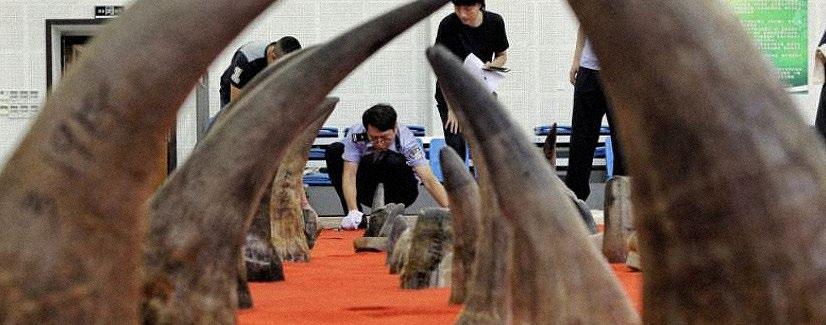
You must understand. Five different control force, and then they regularly change the personnel… in any port, seaport and airports…so it’s not easy to synchronise five different leader… they change every three month, they circulate the position. So we need to wait until we have… we synchronise
— BROKER, JULY 2020
Using fraudulent documents to move illegal wildlife shipments through legitimate commercial channels is a common modus operandi, which often relies on the support of complicit freight forwarding agencies.
The Wildlife Justice Commission analysed the inner workings of the Chen organised crime group (OCG) that was successfully convicted in China in 2020 for smuggling at least 20 tonnes of ivory and rhino horn from Nigeria to China between 2013 and 2019. The Chen OCG concealed the wildlife products in timber shipments sent from Nigeria to Singapore, where the declaration of goods would be changed to timber produced in Malaysia with a forged certificate of origin. The shipments would then be sent to South Korea and on to China. The Chen OCG relied heavily on the use of multiple transit points to obscure the originating port in Africa, as well as bribing officials at customs checkpoints, and using complicit freight forwarding agencies to clear the shipments, switch the bill of lading, and repack containers for onwards transportation. Upon arrival in China, the illegal shipments were cleared with the help of another clearing agent before being transported to the designated storage location to await onward sale to buyers. (Refer to the Chen OCG Case Study).
Criminal networks can provide bribes and regular payments to law enforcement authorities in exchange for advance warnings about planned law enforcement activity and protection for their criminal business, allowing traders to operate with impunity.
In 2015, Wildlife Justice Commission investigators were told by a trader that Nhi Khe village in Vietnam was “a special place”, and all traders paid a monthly fee to local law enforcement officers in exchange for protection. This allowed traders to openly display and sell their illegal rhino horn and elephant ivory products, while advance warning would be provided for any law enforcement inspections. In one instance during a meeting with a trader at a timber store, investigators directly observed a transaction occur when the police arrived, and the trader immediately started to negotiate the bribe payment. Unlike other environments, where law enforcement action is perceived as a threat to the criminal, in a corrupt environment it acts as an essential facilitator of the crime. Intelligence indicates that this type
of corruption allows higher-level traffickers with better connections with government officials to exert a greater level of control in the criminal operating environment, while smaller traders who cannot afford to pay high protection fees are more exposed to arrest. (Refer to the Black Business Report).

Government officials can be the ones purchasing illegal wildlife products. In China, a government official was convicted in April 2021 for abuse of power, corruption, and purchasing illegal wildlife products. According to court records, the official took advantage of his position as Party Secretary and director of a government bureau to embezzle millions of yuan for personal use over a period of four years, including purchasing rhino horns and pangolin scales. He was sentenced to 13 years imprisonment with a fine of RMB 2,010,000.30
You know what, my warehouse is very safe. Even if the police find out, they wouldn’t do anything with it
— KINGPIN, NOVEMBER 2020

At the destination end of the supply chain, forged, fraudulent, or illegally issued permits and documents are commonly used to facilitate the importation of illegal wildlife shipments. It can involve the use of fictitious consignee companies and freight forwarders on air waybills and bills of lading and changing documentation while shipments are en route. This method often relies on corrupt practices to facilitate the use of the fraudulent documents.
In February 2023 in Vietnam, Nguyen Duc Tai was sentenced to 13 years in prison for using fraudulent identification cards to set up shell companies that were used to mask the importation of almost 10 tonnes of illegal wildlife products in two shipments from Africa.31 The companies were registered to import and export goods, but police could not identify their headquarters or any business activity other than importing the illegal wildlife shipments from Africa. Authorities intercepted two consignments imported into Vietnam by the companies: a shipment from South Africa in July 2021 containing 138 kg of rhino horn and 3.1 tonnes of lion bones; and a shipment from Nigeria in January 2022 containing 456 kg of ivory and 6.23 tonnes of pangolin scales.32 Although the case did not identify corrupt acts directly linked to the misuse of the companies and smuggling, additional intelligence obtained by the Wildlife Justice Commission suggested that clearance of the July 2021 shipment was supposed to be “taken care of” by high-level officers, and following the seizure the shipment owners engaged another “team” to “solve the problem”, which may refer to buying back the seized product from a corrupt officer.
31 h ttps:// e.vnexpress.net/news/news/man-sentenced-to-13-years-for-trafficking-10-tons-of-wild-animal-parts-4573939.html
h ttps://www.talkvietnam.com/2022/06 /man-arrested-for-trading-rhino-horns-ivory-through-shell-companies/
If they didn’t ask me for a favor [to act as a middleman for traders], they would have asked people from Embassy, they did those sorts of thing as well… No embassy people would live by their embassy’s salary
— BROKER, AUGUST 2020
The Akasha brothers, Baktash and Ibrahim, were arrested in Kenya in November 2014 on charges of conspiracy to import heroin and methamphetamine into the United States and weapons offences. The investigation found the Akasha brothers were part of an established and violent drug trafficking network, while intelligence suggested they were also involved in large-scale ivory trafficking. 33 Following their arrest, the brothers were alleged to have engaged in an extensive bribery scheme in an effort to avoid extradition to the United States, paying bribes to Kenyan judges, prosecutors and law enforcement officials. They were eventually extradited in January 2017 following an out-of-court agreement between Kenyan and United States authorities, and in October 2018 pled guilty to additional charges of obstructing justice. 34 (Refer to the Crime Convergence Report).
A dramatic case in Zimbabwe involved a group of seven Chinese nationals who were arrested in December 2018 for the illegal possession of 20 kg of rhino horns, which police believed were poached in a neighbouring country and smuggled into Zimbabwe. The suspects were repeatedly denied bail as prosecutors argued there was a high likelihood that they would flee the country before the trial concluded. The suspects appealed and in April 2019 were granted bail with strict conditions. Some observers believe the bail was orchestrated
33 h ttps://www.theguardian.com/environment/2017/aug/19/super-gangs-africa-poaching-crisis
34 h ttp s://www.justice.gov/usao-sdny/pr/former-leader-kenyan-organized-crime-family-and-his-brother-plead-guilty-narcotics
through connections to the judge. Bail conditions were followed until September 2019, when the suspects escaped with the assistance of a Zimbabwean police officer to whom they had allegedly paid a bribe and provided a stolen car to drive them across the border into Mozambique. The group is believed to have escaped onto a Chinese fishing boat at Maputo and returned to China. The police officer was arrested but acquitted of all charges in February 2020. 35 (Refer to the Rhino Report).
A high-profile wildlife poaching case in Thailand involved the arrest of one of the country’s wealthiest figures, construction tycoon Premchai Karnasuta, and his three accomplices in February 2018 at the Thungyai Naresuan Wildlife Sanctuary in possession of carcasses of protected animals, including a black Indochinese leopard, pheasants and a deer. In addition to the poaching-related charges, Premchai was also charged with attempted bribery of park rangers following his arrest. Witness testimony at his trial stated that Premchai told park rangers he would give them “whatever they wanted” if they allowed him to go free. He was found guilty and in June 2019 the Criminal Court for Corruption and Misconduct Cases Region 7 handed down a oneyear prison term, which was later upheld by the
Appeal Court. 36 The other poaching-related charges were eventually finalised in December 2021, with the Supreme Court of Thailand sentencing Premchai to two and a half years in prison. 37
35 h ttps://oxpeckers.org/2021/01/perfect-rhino-crime/
36 h ttps://www.chiangraitimes.com/crime/poaching-construction-tycoon-premchai-jail-sentence-upheld/ 37 h ttps://www.aljazeera.com/news/2021/12/8/thai-construction-tycoon-gets-jail-term-for-poaching-of-animals
[Three big bosses] have been in business for tens of years and also in trouble with police many times, but they all got out. They got arrested, they paid bribes then got out, that’s very normal
— BROKER, OCTOBER 2020
Criminal networks may use money laundering techniques to disguise or conceal the origin of financial proceeds and assets generated from illicit activities, such as wildlife trafficking and the corruption that enables it. Tackling the financial flows and recovering the proceeds from these crimes is identified as a key action for States parties under UNCAC Resolution 8/12, 38 to remove the profit from criminality and to prevent the proceeds from being invested in the commission of further crimes. However, there are few examples of investigations or prosecutions of money laundering related to wildlife crimes, and even fewer examples of investigations of money laundering deriving from corrupt acts that were linked to wildlife crimes.
One rare example can be found in South Africa, when in April 2022 two Kruger National Park field rangers were arrested in relation to providing tactical information to rhino poaching syndicates in exchange for large sums of money, and were charged with fraud, money laundering and corruption. 39 In December 2022, nine of their relatives were arrested on money laundering charges, with the rangers’ bribery payments allegedly funnelled through their family members’ bank accounts. 40 The case is currently before the court.
An example of money laundering linked to wildlife crime as the predicate offence is the Operation Apex case in the United States, where in September 2020, 12 individuals and two businesses were charged with conspiracy for drug trafficking, money laundering, wire fraud and mail fraud. The group was allegedly smuggling shark fins and totoaba swim bladders from Mexico to Hong Kong SAR via the United States, as well as inter-state drug trafficking within the United States, over the span of 10 years.41 According to the indictment, members of the conspiracy used falsified documents, sham businesses, cash couriers, and dozens of bank accounts to transfer bulk cash amounts to third-party business accounts that dealt in gold, precious metals, and jewels, located in the United States, Mexico, and Hong Kong SAR.42 (Refer to the Crime Convergence Report).

38 U NC AC Resolution 8/12 on Preventing and combating corruption as it relates to crimes that have an impact on the environment , Articles 3, 4 and 11, accessed at: https://www.unodc.org/documents/treaties/UNCAC/COSP/session8/V2006805e.pdf
39 h ttps://www.iol.co.za/news/kruger-national-park-rangers-remanded-in-custody-after-being-arrested-for-allegedly-working-withpoachers-16039a06-1294-47dd-91fa-a2b906b29b97
40 h ttps://www.news24.com/news24/southafrica/news/relatives-of-former-field-rangers-linked-to-wildlife-trafficking-arrested-for-money-laundering-20221207
41 h ttp s://www.justice.gov/usao-sdga/pr/international-money-laundering-drug-trafficking-and-illegal-wildlife-trade-operation
42 h t tps://www.justice.gov/usao-sdga/press-release/file/1313441/download
Wildlife Justice Commission investigations find that transnational organised wildlife crime networks are often structured as illicit businesses, with their activities geared towards meeting the demands of customers and suppliers, working within and around the regulatory and legal framework, and often being competitive in nature rather than forming a monopoly. In a similar model to legitimate employment, criminals often have defined roles within the network, such as financing, sourcing, logistics, money movement, and so forth. Within such a structure, corruption also becomes an organised activity, and the related costs are treated as a regular business cost. To exemplify, the Wildlife Justice Commission has collected intelligence of communications between a shipper and the network leader specifying a list of transport-related costs including corruption costs, and requesting payment for services rendered, mirroring the process of submitting an invoice.
Intelligence suggests that the price of bribes, clearance fees, and other costs related to

corruption are highly variable between locations and can change rapidly, depending on factors such as the quantity and value of the smuggled product, rank or position of the officer/s requiring payment, the perceived level of risk, level of specialisation of the service/support required, among others. Some types of corruption costs may be recurring, such as clearance fees at every seaport, airport, or checkpoint a shipment passes through, or they may be incurred once only to pay for a specific process, such as a payment to obtain a fraudulent permit. When engaging with brokers and traffickers, corruption costs are often bundled together with the cost of transportation, delivery, and handling fees, making it difficult to isolate this type of price data.
Due to gaps in the data and the variances in factors that determine corruption costs, the Wildlife Justice Commission is unable to conduct meaningful analysis of the financial flows that may be derived from corruption related to wildlife crime. However, the following anonymised data and intelligence is provided as examples of corruption price data collected during investigations, to help build the intelligence picture on this aspect of corruption.
paid to secure release from custody following arrest
Clearance fee for shipping container to bribe relevant agencies, “including worker, custom and police”
Clearance fee for shipping container to bribe relevant agencies, which has increased. “Before loading one container is cost 10,000 dollar, but now it’s 15,000 dollar something”.
Clearance fee for shipping container to pay off all relevant portbased agencies including customs, anti-narcotics, and others –ensures container will not be scanned and secures official escort from warehouse to port
Fee to “take care of everything” for shipping container, includes shipping, clearance, and handler’s fees
Bribe paid to airport staff to ensure secure handling of passenger luggage
Full
up” fee for shipping container, including transportation costs from source to destination and all bribes en route to ensure container will not be scanned or checked (Price from Boss 2)
In 2018, the Wildlife Justice Commission collected intelligence on the smuggling costs associated with the supply of rhino horns by air transportation from Africa to Asia. Figure 1 shows the proportion of these costs in relation to the product price at the source location, demonstrating how additional transportation, clearance, delivery, and handling fees to cover the expenses and profits accumulate as the shipment moves through the supply chain.
Similarly, intelligence collected in August 2020 in relation to smuggling a shipping container of 10 tonnes of pangolin scales by maritime transportation from Nigeria to Vietnam indicated that the product purchase cost, transportation “set up” costs, and final profit were approximately equal in value. The broker suggested it would cost around VND 10 billion to buy the product in Nigeria and another VND 10 billion to cover all transportation costs and bribes to avoid scanning and checking during custom clearance (equating to a VND 20 billion investment), but the product could be sold for VND 30-33 billion in Vietnam, netting VND 10-13 billion profit.
It is clear from the intelligence and the price data that has been obtained, that despite all the variables behind the cost of corruption, these payments make up a considerable portion of the total costs of an illicit wildlife shipment. This is likely a reflection of their importance in underpinning the illegal trade.
The Wildlife Justice Commission suspects that certain payment methods may be preferred or more commonly used for some types of corrupt acts, such as cash payments for bribes for law enforcement protection or to secure release from custody. Intelligence suggests that costs that are more structured and organised, such as fees to secure customs clearance and obtain fraudulent permits, may be more likely to be paid by bank transfer, possibly via third-party accounts as a layer of concealment. For example, the United States’ indictment of a Hong Kong-based company that allegedly procured illegally captured macaques from Cambodian government officials, details a paper trail of emails, remittance statements and internal accounting documents that recorded the payments made to officials via bank transfers. 43
Apart from the use of third-party bank accounts to make and receive payments, the Wildlife Justice Commission has observed very little effort among wildlife traffickers to hide or disguise their financial activity. Many traffickers in Asia indicate a preference to deal in RMB and direct their payments to Chinese bank accounts, but this may also be a practical measure reflecting that a major contingent of the customer base is within China. Wildlife Justice Commission has collected intelligence from one high-level Vietnamese trafficker who only accepted payments in RMB and refused to deal in USD due to a perceived higher risk of detection, saying it would “be just like suicide”.
43 h t tps://www.peta.org/wp-content/uploads/2022/11/US-v-KEO-et-al.pdf
44 h ttps: //www.ft.com/content/eb19ae41-9c9a-4510-87e2-a42cc2e1534b
Tolerating corruption comes at a cost, and it can result in significant revenue and resource losses to governments and people. This is demonstrated in a case that is currently before the London High Court, with the government of Vanuatu claiming that its mackerel fishing rights were corruptly awarded to Panama-registered fishing company Unimed in 2010, “in perpetuity” and for a fraction of their market value, without the knowledge of the fishing ministry.44 It is alleged that Unimed brokered the deal for sole and exclusive access to Vanuatu’s mackerel fishing quotas, including the right to sell and trade the quotas, through a Vanuatu company that had a contract to act as a government agent. Vanuatu claims that this company’s contract did not allow it to agree to the deal with Unimed. It is further alleged that the terms of the arrangement were amended in 2012 to bar Vanuatu from using the defence of sovereign immunity in any dispute. Under the arrangement, Unimed is liable to pay the government a nominal fixed rate of only USD 2 per tonne for the mackerel rights. Unimed openly admits that it has obtained a highly lucrative contract, but refutes claims that corruption was involved in securing the arrangement. Considering the opaque nature of the agreement, there is likely to be little oversight of the mackerel fishing industry, allowing the potential for operators to exceed fishing quotas or engage in IUU fishing. The impact of such an agreement and any related corruption is even more pronounced for a small island developing state where subsistence fisheries are extremely important in the local economy for household income and food security.45
45 F AO (2018), Republic of Vanuatu Fishery and Aquaculture Profile, accessed at: https://www.fao.org/fishery/en/facp/vut?lang=en
The harm from corruption and organised crime can permeate all aspects of society by undermining the rule of law, degrading the environment, jeopardising public safety and security, breaking down service delivery, distorting markets, and eroding quality of life. 46
Specifically in relation to wildlife crime, the impact of corruption is especially evident in the erosion of institutions responsible for environmental protection, the resulting environmental damage which can be long-term with unknown consequences, and threats to human life.
As the ENACT report lays bare, a breakdown in trust has taken a major toll on SANParks and the management of Kruger National Park. “Relations between staff and management have become strained and increasingly toxic, poisoned by mutual mistrust and suspicion. Morale is low.” 47 In April 2023, it was reported that only five of the 87 vacant ranger positions were filled last year, and 51 positions have been vacant for more than five years. 48 While SANParks is taking steps to address its internal issues and restore integrity, rebuilding the institution will be an enormous task.
In terms of environmental harm, the impacts of these crimes are diverse and extensive. Poaching and illegal wildlife trade are major threats to
biodiversity, contributing to species endangerment and extinction. Illegal logging is a key contributor to deforestation and habitat destruction, and it can increase the risk of floods and landslides. Forest loss further contributes to the acceleration of climate change. Illegal fishing and fisheries crimes can contribute to overharvesting of fish stocks and undermine food security. 49 Corruption in this context can reduce the effectiveness of conservation programmes and establish incentives for the overexploitation of natural resources.
The threat this then poses for people cannot be overstated. Apart from the economic impact of the loss of resources and livelihoods, corruption has direct and fatal consequences on environmental defenders and those standing in the way of criminal networks engaging in wildlife crime. It is estimated that more than 1,000 park rangers have been killed in the line of duty over the past 10 years, a large percentage due to commercial poachers, illegal loggers, and armed militia groups. 50 More than 1,700 land and environmental defenders were murdered globally in the past decade, particularly in Brazil, Colombia, the Philippines, Mexico and Honduras, with corruption being identified as a key driver of these killings. 51 Corruption can protect the powerful and deprive communities of access to justice in these situations, further exacerbating the impact of these crimes.
46 Tenn ant, I. (2021). All Roads Lead to Rome: Towards a coordinated multilateral response to organized crime and corruption. Global Initiative against Transnational Organized Crime, p.7.
47 R ademeyer, J. ( 2023). Landscape of Fear: Crime, corruption and murder in greater Kruger . Research paper, Issue 36, ENACT, p.3. 48 h ttps:/ /mg.co.za/environment/2023-04-22-creecy-just-five-of-87-ranger-posts-at-kruger-park-have-been-filled/
49 U N EP (2018), The State of Knowledge of Crimes that have Serious Impacts on the Environment , p.4.
50 h tt ps://thingreenline.org.au/story/#the-why-of-tglf
51 h ttp s://www.globalwitness.org/en/campaigns/environmental-activists/decade-defiance/
Due to the deep linkages between wildlife crime and corruption, it is imperative that law enforcement responses address these issues together in a coherent way. To support this type of approach, this chapter describes a rhino horn trafficking case, highlighting the crime enabling factors and the points where corruption is known or suspected to have played a role in facilitating the shipment. It then discusses practical measures that could be taken from a law enforcement perspective to address the crimes and corruption risks. This case was detected during a joint investigation between the Wildlife Justice Commission and two national law enforcement authorities, and it is representative of the typical modus operandi used in wildlife trafficking via passenger air transportation. The case details have been sanitised as it is linked to ongoing investigations.
This investigation is focused on a large, global wildlife trafficking network operating primarily in four countries, but with a reach that extends far beyond the borders of these countries. Its key associates are nationals of at least four different countries. The network is well-established and known to have been operating for many years. This rhino horn trafficking incident was initially detected through undercover engagement with a key associate, but further details were subsequently pieced together and corroborated through the analysis of mobile phones that were seized in the arrests of several network members, and intelligence collected during further investigations into other network members who continue to operate.
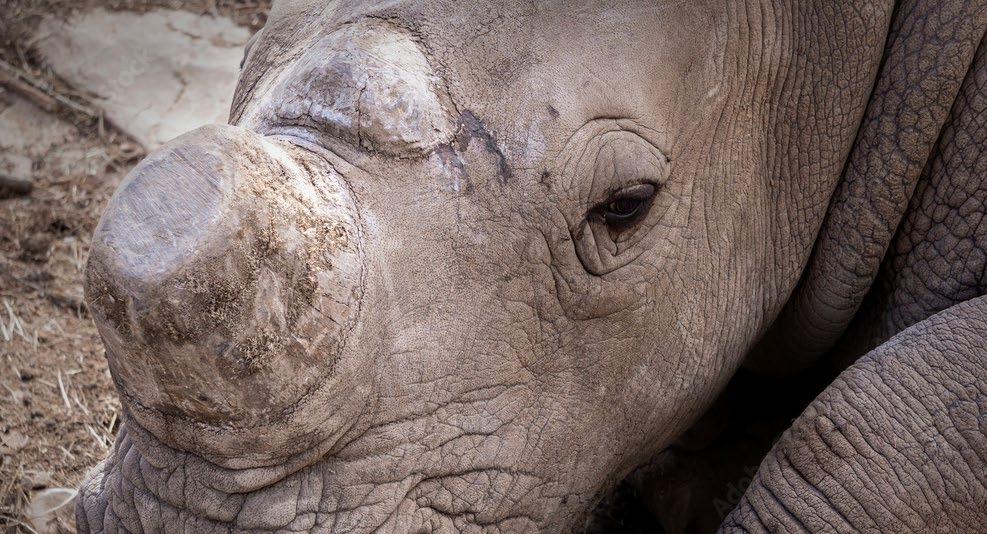
In April 2022, three different principals agreed to cooperate in sending a rhino horn shipment from Source Country 1 to the Destination Country. They were not equal investors, with each one owning different quantities of horn in the shipment, but the cooperation enabled transportation and facilitation costs to be shared, thereby reducing the overall financial risk to each principal in the event of a seizure. One of the principals was Subject A and his lieutenant Subject B, who are key members of the criminal network under investigation. Intelligence suggests that they coordinated preparations for the shipment on behalf of the other principals.
Subject C is a rhino horn supplier and shipper who has been a member of the same criminal network for at least four years and was responsible for sourcing at least some of the rhino horn for this shipment, if not all. Subject C claims he can obtain a large amount of horn in a short amount of time. Once the horn is sourced, there is a 24-hour window for the buyer to make the payment and secure the product before it will be sold to other customers, suggesting that he does not stockpile product.
Subject C previously worked in the travel industry for more than 10 years, including with a regional airline, a major international airline, and other aviation and travel companies. He maintains a network of contacts at these companies and across three airports in Source Country 1 that he uses to facilitate the transportation of rhino horn shipments. He also owns a legitimate seafood business in Source Country 1 that regularly exports containers of frozen seafood to Source Country 2, with the containers returning empty back to Source Country 1. He claims he can place any product in these containers and bring them safely across the border into either country. Some previous rhino horn shipments linked to this criminal network have been concealed in seafood consignments.
Corruption risk: Frontline airport staff are vulnerable to corruption exposure.
Crime enabler: Use of legitimate business infrastructure to facilitate smuggling.
Corruption risk: Potential bribery at border checkpoints to pass through unchecked.
After Subject C supplied some (or all) of the rhino horns, Subject B prepared them for shipment. He measured and recorded the weight of each horn, individually wrapped them in plastic to conceal any obvious smells and placed them in (at least) two suitcases. Intelligence at this stage suggests that Subject A and B’s portion of the shipment likely consisted of 23 horns weighing 36.54 kg, comprising six front horns and 21 rear horns. Intelligence collected later in the investigation suggested a second principal owned 4 kg of horn. The amount of horn owned by the third principal is not known, but from the amount that was later seized, it was likely to be at least 5.58 kg.

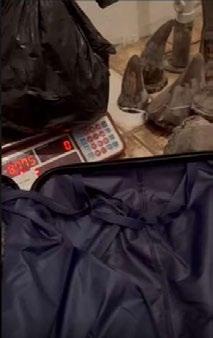
Crime
Crime enabler: Exploitation of the mishandled baggage service.
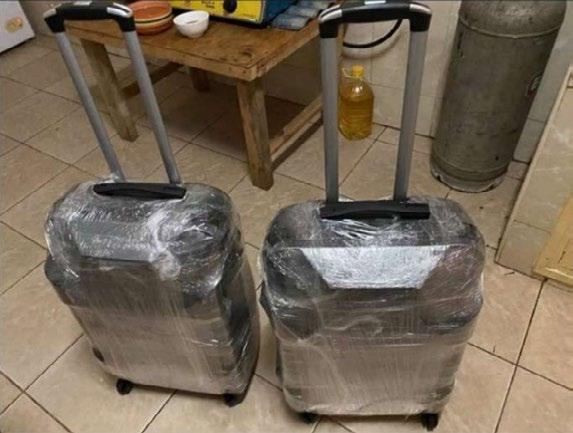
Intelligence suggests that Subject C avoids shipping by air cargo because it leaves more of a paper trail. Instead, he prefers to ship by air passenger luggage, exploiting the ‘mishandled baggage’ process. This refers to the process where baggage that has been separated from the passenger during transit will be forwarded by the fastest means possible to the intended destination, which can include using the services of another airline. Due to the urgency of this service, it is likely that mishandled baggage is not subject to the same scrutiny as regular baggage, which could explain why it is his preferred smuggling method. Subject C revealed the cost of this transportation method is USD 30,000 for 32 kg of baggage, which is likely the cost of the bribe needed to facilitate the removal of baggage from the plane at the transit location so it can be categorised as mishandled baggage.
Corruption risk: Less/no scrutiny of baggage in the mishandled baggage service.
Crime enabler: Bribery and corruption plays a crucial role in transporting illicit shipments.
Subject C organised the travel bookings for the courier to depart Source Country 1 on 27 April 2022 and paid the necessary bribes and facilitation payments on behalf of the shipment owners. He met with Subjects A and B to collect the luggage on 26 April, and the following day he put the courier and the baggage on the flight. The courier was booked on a business class flight, likely due to the additional baggage allowance compared to a standard economy ticket. The airline that was utilised allows two pieces of luggage at 32 kg each for business passengers. Subject C sent a photo to Subject A of two checked baggage receipts, followed by a video and photos of the two suitcases loaded in what appears to be the hold of an aircraft.
Crime enabler: Bribery and corruption plays a crucial role in transporting illicit shipments.
Crime enabler: Use of multiple transit points rather than more direct routes.
On 27 April 2022, airport customs officers in Transit Country 1 detected the shipment and arrested a foreign national who was illegally transporting 46.12 kg of rhino horn and 5.88 kg of rhino teeth. The products were individually sealed in plastic wrap and concealed in two suitcases also wrapped in plastic. The arrested suspect was a courier who had been engaged by the criminal network to move the shipment from Source Country 1 to Transit Country 1 and then Transit Country 2, from where it would be further shipped to the Destination Country. This seizure was not publicly reported, and authorities in Transit Country 1 did not share information of the incident with law enforcement authorities from either Source Country 1 or Transit Country 2 (which were on connecting flight tickets). The rhino horn shipment and the arrested courier were at least temporarily held by the police authority of Transit Country 1, but it is not known if formal charges were laid or to what extent any follow-up investigation was conducted.
Corruption risk: No public reporting of seizure, reducing transparency and accountability.
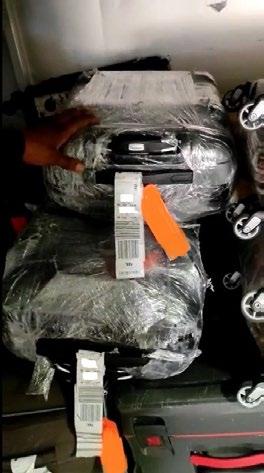
Intelligence indicates that Subject C was alerted to the seizure by one of his contact points within a few hours of the plane arriving at Transit Country 1: “Bad morning. Pax and bags offloaded”. The contact point sent Subject C a screenshot of the customer profile from the airline’s operating system, showing that the passenger did not board the connecting flight to Transit Country 2, and another screenshot showing that the passenger’s four bags with a total weight of 92 kg were also not on the flight. No further intelligence was identified to explain the apparent discrepancy between the number and weight of checked bags in the airline booking system compared to what was otherwise known about the shipment and the quantity of rhino horn that was seized. However, it is possible that more than one courier could have been involved in transporting the luggage, and the shipment could have been packed in more than two suitcases.
During a phone call with Wildlife Justice Commission investigators on 29 April 2022, Subject B discussed “the problem” at the airport in Transit Country 1, and suggested the shipment may have been detected because the bags were “too heavy”. He said he is trying to get the luggage sent back from Transit Country 1, implying that he may have been attempting to bribe authorities to release the seizure. This was not corroborated by other sources, but the criminal network is known to have done this in other seizure instances.
Within two weeks of the seizure, the criminal network was preparing to move another rhino horn shipment from Source Country 1. Subject B said he had lost a lot of money in transit on the last shipment, but he had acquired more rhino horn and wanted to explore a new trafficking route via Transit Country 3. He was actively seeking introductions to potential airport connections in this country who could help set up and facilitate a new trafficking route.
Image 9: Screenshot of communications between Subject C and his contact point (identifying details in the images have been redacted). Source: Wildlife Justice Commission.
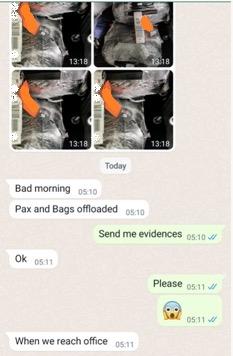
Corruption risk: Bribery to release seized goods.
Corruption risk: Frontline airport staff are vulnerable to corruption exposure.
Crime enabler: Shifting trafficking routes in response to changing operating conditions.
This case study demonstrates the close links between crime enabling factors and corruption risks, many of which can be addressed together with the use of standard law enforcement methodologies and targeted anti-corruption measures.
Although it is not known if any follow-up investigations were conducted in Transit Country 1 after the seizure and arrest occurred, this should be the starting point for further investigation.
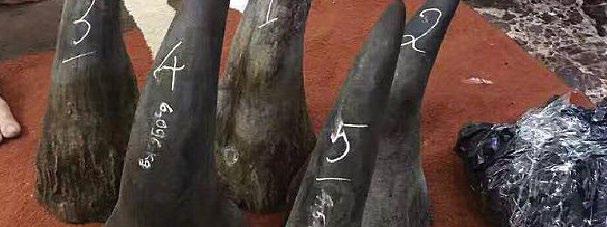
This should include intelligence analysis of any related travel or shipping documents to identify other individuals, companies, or locations that may be connected to the shipment, analysis of the modus operandi to identify other possible linked shipments in a crime series, and analysis of a suspect’s phone following arrest to identify other members in their network and any corrupt contacts. In this case, analysis should also be conducted of the linked seafood business to evaluate its potential use as a cover to smuggle illicit products across borders.
Special investigative techniques such as undercover investigations, covert surveillance, and controlled deliveries should be used to map the network responsible, to gather evidence on who was behind the shipment and its potential reliance on key corrupted actors. Special investigative techniques allow law enforcement authorities to be in a better position to evidence how the network operated and to ensure that those responsible for orchestrating crime are brought to justice.
Within law enforcement agencies, establishing vetted units that have undergone additional security and integrity screening processes is an important tool for conducting sensitive investigations such as corruption investigations. Such units are more corruption resistant, safeguarding operational integrity and reducing the chance of sensitive information being compromised.
Financial investigations are important to conduct in parallel with criminal investigations to identify the proceeds of crime and facilitate asset recovery, to map out possible money laundering offences, corrupt settings, and payment methods.
They could begin with enquiries such as examining how the air ticket was purchased and thinking about a financial profile when questioning couriers and other suspects. If a corrupt suspect is identified during the course of a criminal investigation, consideration should be given to extend any associated financial investigations to the suspect’s family members, given the potential risk that corruption payments could be directed to their bank accounts.
In this case, further investigation is needed to understand the potential role of the mishandled baggage service in facilitating the smuggling of illicit shipments. Understanding how this service could be exploited would also assist with identifying relevant anti-corruption strategies and procedures that could be introduced to reduce the likelihood of it being misused.
To mitigate other risks relating to frontline airport staff being drawn into corrupt schemes, a range of prevention measures can be considered such as increasing staff salaries to reduce the financial temptation, regular staff rotation, providing corruption education and awareness programmes. Potential proactive measures could also include integrity testing and asset declaration registers as a tool to help detect unexplained wealth or undue advantage.
International cooperation with other countries implicated in the trafficking route is crucial, including sharing information on the seizure and arrest to support any other linked investigations and identify
other members of the criminal network. In this case, the seizure was not publicly reported, and authorities in Transit Country 1 did not share information of the incident with law enforcement authorities from other countries connected on the flight route.
A lack of transparency around the seizure can increase corruption risks such as seized products being sold on the black market, or leaving officers susceptible to bribes from traffickers to release the seized shipment. Publicly reporting seizures at the appropriate time and in a way that will not compromise ongoing investigations is good practice to increase transparency and accountability for the confiscated contraband and to support information sharing. Instituting clear procedures for handling, recording, storage and disposal of seizures, as well as providing appropriate training for officers and oversight of seizure management, will also help to mitigate this type of corruption risk. Furthermore, the CITES resolution on compliance and enforcement recommends that Parties provide detailed information on significant cases of illegal trade to the CITES Secretariat. Parties can also request the deployment of a Wildlife Incident Support Team should expert support be needed following any such incident. 52
In cases where fraudulent permits or licences are the main facilitating factor, introducing electronic permits and automated processes such as eCITES53 can improve transparency, record keeping and audit capacity, and remove the opportunities for manual manipulation or falsification of paper documents.
52 C I TES Conf. 11.3 (Rev. CoP18) on Compliance and Enforcement, refer to articles 10.k) and 15.c).
Ac cessible online at: https://cites.org/sites/default/files/document/E-Res-11-03-R18.pdf
53 h ttps://cites.org/eng/prog/eCITES
To successfully address wildlife crime, corruption risks across the supply chain must be identified and addressed in parallel with efforts to investigate and prosecute the criminal offence. Corruption creates resilient criminal networks due to its enabling and facilitating role,54 but if the likelihood of corrupt practices can be minimised, then opportunities to engage in wildlife crime should also diminish.55
Preventative and criminal justice approaches are offered by UNCAC, UNTOC, and a plethora of other international agreements and policies, but more needs to be done to translate these commitments into integrated, tangible actions on the ground to prevent, detect, investigate, and prosecute corruption in relation to wildlife crime.
The interconnectivity between wildlife crime and corruption requires much more than brief or siloed investigations, and they should not be treated as separate issues in law enforcement responses. As the case study demonstrates,
there are often close links between the corruption risks and crime enabling factors, which can be addressed using standard law enforcement methodologies such as intelligence analysis, specialised investigation techniques, financial investigations, international cooperation, and information sharing.
Above all, cooperation is essential to address the criminal networks operating in source, transit, and destination countries, and to root out those in the private and public sectors who are engaging in corrupt practices that facilitate these crimes. The tools to effectively address wildlife crime and corruption are already at the disposal of law enforcement agencies and are widely used for other forms of serious and organised crime, but they must be applied in a more coordinated way to address this problem. Targeted action must be prioritised to reduce and eradicate corruption harms, particularly the associated erosion of institutions, environmental damage, and threats to human life.
Law enforcement and legal experts fighting transnational organised wildlife crime.